Monthly ArchiveFebruary 2008
Animation Artifacts &Hubley &repeated posts &Tissa David 29 Feb 2008 08:46 am
Recap Friday: Letterman I, II & III
The following was a post that first appeared March 25, 2006.
I’ve added slightly to it:
- One of the first jobs I had in animation was working for John Hubley in 1972 on Letterman series for The Electric Company. I enjoyed writing the several posts that I’ve combined for this recap:
- There were three seasons of Letterman episodes we did at the Hubley Studio. All 60 episodes were 2 1/2 mins. apiece including the reused wrap-around: “It’s a bird! It’s a plan! It’s Letterman!” They were all directed by John Hubley. The first 40 episodes were all done in-house. The last 20 episodes were split with 10 done in the NY studio and 10 farmed out to Fred Wolf‘s studio in LA. The boards and layouts in NY for those sent out. Fred and Chuck Swenson animated all 10. (These are also the only episodes to use cel vinyl. All the others had the characters colored with marker on paper and cut & pasted onto cels.) The audio was done in NY, and editing was done in the studio by Faith Hubley.
In the first season of the show the primary voices were: Gene Wilder as Letterman, Zero Mostel as Spellbinder, Joan Rivers as the Narrator, and Jack Gilford doing incidental voices. Billy Taylor did the music.
animated by Tissa David for the first season of the show. Letterman runs on two’s.
II
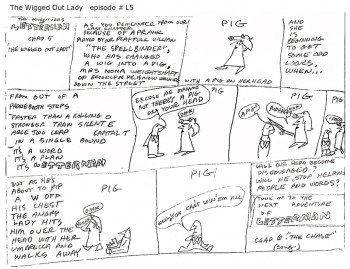 Christopher Cerf wrote all 60 episodes of Letterman, probably in collaboration with John Hubley. The storyboard posted here for episode #5 was by Chris Cerf; that’s pretty much how he did the scripts.
Christopher Cerf wrote all 60 episodes of Letterman, probably in collaboration with John Hubley. The storyboard posted here for episode #5 was by Chris Cerf; that’s pretty much how he did the scripts.
It’s undeniable that the wacky “naive” drawings undoubtedly inspired the models for the characters in the films.
(Click on any image to enlarge to a readable size.)
No doubt also affecting the models was an acccident that John Hubley had had at the start of production on this first series. At a dinner party, John tried to stop a falling 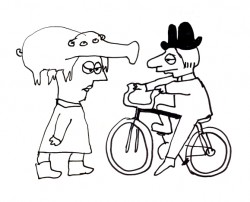 fondue pot filled with melted cheese. Horrible burns over both hands somewhat hampered his artwork. I would make several visits a day to his nearby apartment to have art approved. To have John draw, we’d prop a felt-tip pen into the mass of gauze and cotton and bandages wrapped around both hands. He’d move his wrapped fist around a sheet of paper and end up with a model like the one posted here. This went on for about three weeks (roughly half of the production time.) When he returned, backgrounds were done at a super speed.
fondue pot filled with melted cheese. Horrible burns over both hands somewhat hampered his artwork. I would make several visits a day to his nearby apartment to have art approved. To have John draw, we’d prop a felt-tip pen into the mass of gauze and cotton and bandages wrapped around both hands. He’d move his wrapped fist around a sheet of paper and end up with a model like the one posted here. This went on for about three weeks (roughly half of the production time.) When he returned, backgrounds were done at a super speed.
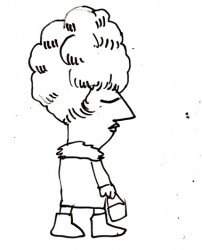
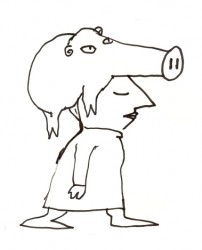 Everything was modeled on Krazy Kat. Lots of white space with sparkling color sprinkled about. The lines were dressed up with a ragged cross-hatching. The characters were colored with magic marker. (John’s favorite color was Eberhard Faber’s “Shock Pink”. Letterman’s skin color took this tone. It showed up in almost everything John did with markers.) The backgrounds were inked with a pentel felt-tip. John would throw a light wash of water over some of these lines to get them to bleed.
Everything was modeled on Krazy Kat. Lots of white space with sparkling color sprinkled about. The lines were dressed up with a ragged cross-hatching. The characters were colored with magic marker. (John’s favorite color was Eberhard Faber’s “Shock Pink”. Letterman’s skin color took this tone. It showed up in almost everything John did with markers.) The backgrounds were inked with a pentel felt-tip. John would throw a light wash of water over some of these lines to get them to bleed.
We’d race daily to get at least half a dozen scenes ink, painted and colored on paper. Then it’d be packaged and sent out via Fed Ex. (Celine Miles in LA cut & pasted the colored drawwings to cels; the art was shot at Animcam by Jack Buehre.) The FedEx guy arrived daily at 5:30pm, so that was my deadline. I found myself coming in at 7am to add more time to the day. I’d watch the clock which ticked furiously; I averaged 30secs to ink a drawing – any more, and I wouldn’t make Faith’s deadline.
III
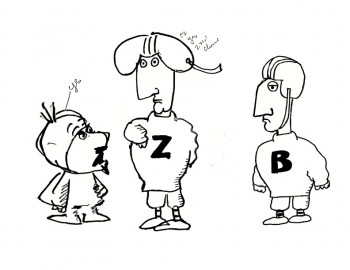 – These scrappy examples are not the best to give an indication of Letterman. But they were the ones I saved, so they’ll have to do. John Hubley drew these very early in the production, and they undoubtedly owe something to Chris Cerf‘s hilarious storyboards.
– These scrappy examples are not the best to give an indication of Letterman. But they were the ones I saved, so they’ll have to do. John Hubley drew these very early in the production, and they undoubtedly owe something to Chris Cerf‘s hilarious storyboards.
The animators involved in season one included: Tissa David, Johnny Gentilella, Vinnie Bell, Lu Guarnier and Jack Schnerk.
Helen Komar, a veteran Asst. Animator in NY, was the coordinator of the production and Gen Hirsch also colored. Gen and I got really close over the couple of years we worked together. She was the wife of Joseph Hirsch, the brilliant artist and mother of Paul Hirsch (editor of Star Wars and other incredible films) .
It was my first real job in an animation studio. Probably for this reason, I remember a lot of what happened – it was indelibly etched in my memory. I was the inker, colorist (we used markers, remember), animator of miscellaneous scenes (I think I animated some 40 scenes that first season), hole puncher, and Assistant Animator.
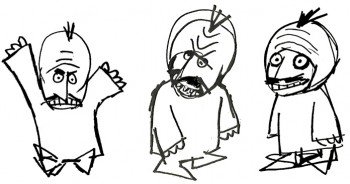 It was in the capacity as Assistant Animator that I found trouble. I hadn’t done it before, except for myself, so was horribly untrained. Because the schedule was so ridiculously tight, I had to assist in ink (Sharpie pens – the fat ones that dribbled ink and bled through multiple sheets of paper) and correctly put some of the animation – I won’t say on model, but closer to model.
It was in the capacity as Assistant Animator that I found trouble. I hadn’t done it before, except for myself, so was horribly untrained. Because the schedule was so ridiculously tight, I had to assist in ink (Sharpie pens – the fat ones that dribbled ink and bled through multiple sheets of paper) and correctly put some of the animation – I won’t say on model, but closer to model.
Johnny Gentilella, an absolutely wonderful guy, was the farthest astream. He was THE Popeye animator at Paramount. His characters looked like Paramount characters, and I had to get them closer to John’s style. This meant assisting (in ink), inbetweening and basically redrawing everything he’d done – in a rush – without proper training. The guilt of what I was doing to Johnny’s drawings weighed heavily on me, and I eventually apologized to him for what I’d done. He laughed and told me that he had no problem with it. This was standard for NY production in those days and he was used to it. (As a matter of fact, he hired me for another job he directed months later. So I guess he wasn’t too upset. I was.)
The race against the clock was always on; my career had started, and it couldn’t have been more fun. And I was working for John Hubley.
Articles on Animation 28 Feb 2008 09:21 am
I Klein’s Music Gags
Daily post 27 Feb 2008 08:48 am
Chicago 10 and Silents
- Opening in New York this friday is the documentary Chicago 10. This film has been in the air for the last year and a half, and it finally makes it to NY theaters this week. The film opened the Sundance Film Festival in 2007.
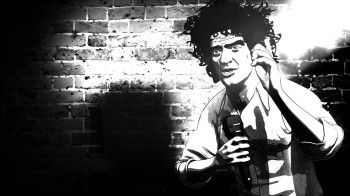 The NYTimes published an article this past Sunday about the film. It says the animation is motion capture, but to me it looks strikingly similar to the work of Bob Sabistan, who directed the animation for Richard Linklater: Waking Life and A Scanner Darkly.
The NYTimes published an article this past Sunday about the film. It says the animation is motion capture, but to me it looks strikingly similar to the work of Bob Sabistan, who directed the animation for Richard Linklater: Waking Life and A Scanner Darkly.
Brett Morgen produced and directed this docu-mentary which includes film clips and lots of animation to tell the story of the Chicago 10. Morgen’s prior work includes The Kid Stays in the Picture, the successful documentary biography of producer Robert Evans. You’ll remember that film was half After Effects effx.
Since footage wasn’t readily available of the court trial (among other things) the animation stands in for that footage. It’s acted and voiced by the likes of Hank Azaria (as Abbie Hoffman and Alan Ginsberg), Mark Ruffalo (as Jerry Rubin), Jeffrey Wright (as the Black Panther Bobby Seale) and Liev Schreiber (as defense lawyer William Kunstler).
J. Hoberman has a review worth reading in the current Village Voice.
The NYTimes has a couple of video clips here.
There are several clips on YouTube here and here and a trailer here.
Larry Ruppel did some non-rotoscoped animation, and he has some of the drawings on his site; there’s also a rough pencil test of the sequence. He worked with Asterisk Pictures and the director, Brett Morgen.
The NYTimes also had an article about the filim in 2006.
Curious Pictures, NY, (Richard Winkler, prod.) supervised the MoCap animation for this film. The traditional animation was done by Asterisk Pictures in NY (Richard O’Connor and Brian O’Connell prod); they did about 10 minutes of film. Dan Haskett had a hand in the character design.
I’ll see the film in two weeks and will report what I see, then.
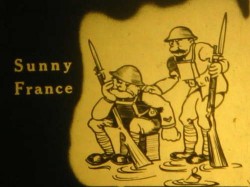 - I have a big interest in silent animated films and as a result have visited Tom Stathe‘s site frequently. Cartoons On Film regularly offers interesting information about those rare films.
- I have a big interest in silent animated films and as a result have visited Tom Stathe‘s site frequently. Cartoons On Film regularly offers interesting information about those rare films.
Currently Tom has an interesting post about World War I film intertitles, and he offers quite a few examples. I don’t know where he finds these things, but it’s amazing. I’m glad to see someone is out there watching and reporting.
 – Eddie Fitzgerald‘s blog, Uncle Eddie’s Theory Corner, offers frame grabs from the rarely seen silent animation series, Mix Fleischman’s Out of the Ink Bottle.
– Eddie Fitzgerald‘s blog, Uncle Eddie’s Theory Corner, offers frame grabs from the rarely seen silent animation series, Mix Fleischman’s Out of the Ink Bottle.
This is definitive proof that Eddie has completely lost control. Or maybe he’s a genius. I’ve laughed each and every one of the many times I’ve returned to look at this post.
_
- Thanks to Tom Sito for listing on his site all of the artists to be eulogized this coming Saturday at the Animation Guild’s tribute, An Afternoon of Remembrance. The program is free of charge and is open to all. No RSVPs necessary. As Tom says, “You don’t have to be related to anyone to attend. It is about the animation industry remembering our friends and colleagues. I would like to be there.
1 pm Memoriams
Hollywood Heritage Museum (Lasky-DeMille Barn)
2100 N. Highland (across from Hollywood Bowl), Hollywood, California
Animation Artifacts &Disney &Peet &Story & Storyboards 26 Feb 2008 09:01 am
Susie Board 2
Here is the remaining half of Bill Peet‘s storyboard for Susie, the Little Blue Coup.
Many thanks to John Canemaker for the loan of this board.
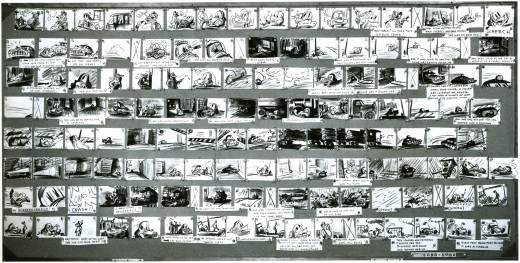
As usual, this is the composite of the storyboard panel represented here.
I’ve split it up and present it in a larger form.
 B1a
B1a
____________(Click any image to enlarge to a legible size.)
There is one remaining board with this series. It contains some BG layouts and larger images. I’ll post that next week.
Animation Artifacts &Disney &Peet &Story & Storyboards 25 Feb 2008 09:20 am
Susie Board 1
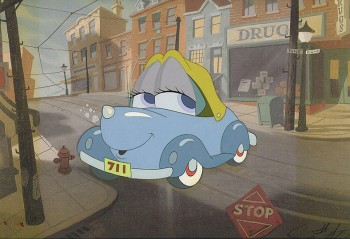 - Last week, I posted the galleys for Bill Peet ‘s book art for Susie, the Little Blue Coupe. I can’t say for sure that it ever became a book, but I do know it was a film completed in 1951.
- Last week, I posted the galleys for Bill Peet ‘s book art for Susie, the Little Blue Coupe. I can’t say for sure that it ever became a book, but I do know it was a film completed in 1951.
..The film was directed by Clyde Geronomi.
..The Layout was by Don Griffith and
…______________________Hugh Hennesy.
..The animation was by Bob Carlson, Ollie
._.Johnston, Hal King and Cliff Nordberg.
..The backgrounds were by Ralph Hulett.
..The music was composed by Paul Smith.
Thanks again to John Canemaker, I have the storyboard by Peet for this short Disney film. Part 1 appears here.
As in the past I’ve broken the board down so that I could post it as large as possible so that you can read it when the images are enlarged. Enjoy.
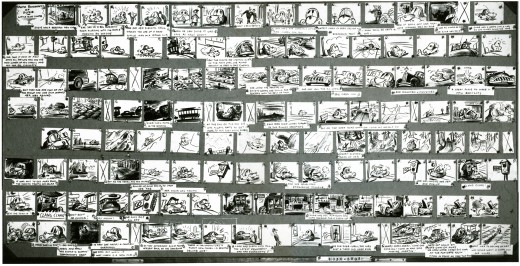
.__This is the complete board. I’ve broken up each individual row, they appear below.
 A1a
A1a
_________(Click any image to enlarge.)
_______________________________I’ll finish the rest of this storyboard tomorrow.
Animation Artifacts &Events 24 Feb 2008 09:34 am
Oscar nite
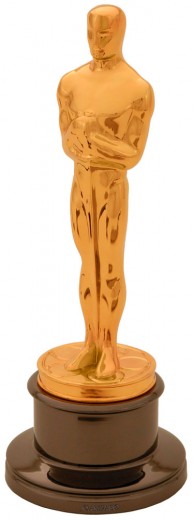 - Tonight is Oscar night. There seems to be less enthusiasm for this year’s award than has been in past years. Perhaps that has to do with the on-again off-again consequence of the WGA strike. Maybe it has to do with the films, though, personally, I love a couple of the films nominated.
- Tonight is Oscar night. There seems to be less enthusiasm for this year’s award than has been in past years. Perhaps that has to do with the on-again off-again consequence of the WGA strike. Maybe it has to do with the films, though, personally, I love a couple of the films nominated.
Anyway, to celebrate the Oscars, I thought I’d show off a bit of personal memorabilia that hangs over my animation desk.
Back in 1985, when I was nominated for my short, Doctor DeSoto,
John Canemaker did a comic strip caricaturing different ways I could give my acceptance speech. I still think it’s hilarious. It’s a response to Jimmy Picker’s great acceptance speech in which he had a spinning bow tie. The clip is replayed in those reruns of the Oscar’s greatest moments.
This cartoon is self explanatory, so I offer it as is (fading colors and all).
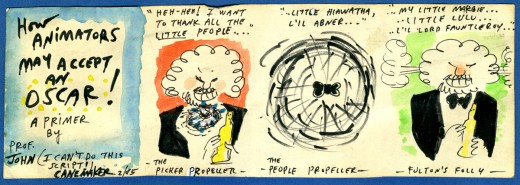
____________(Click image to enlarge.)
If any of you get nominated, I hope you have as great and talented a friend to offer something as nice.
Commentary &Theater 23 Feb 2008 09:19 am
Sunday
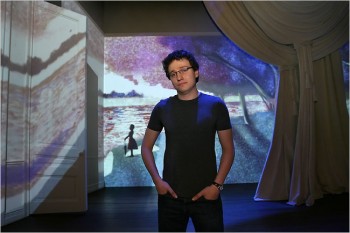 – As mentioned yesterday, last Wednesday, I saw the Roundabout Theater Company‘s production of Stephen Sondheim‘s glorious show, Sunday In The Park With George.
– As mentioned yesterday, last Wednesday, I saw the Roundabout Theater Company‘s production of Stephen Sondheim‘s glorious show, Sunday In The Park With George.
The reviews were universally glowing calling it everything from “Art” to a “Masterpiece.” In one sense, I’m glad of it, but in another I find this completely dispiriting.
_________________________________Sam Buntrock, the director, on the set.
The show is a restaging of ___________________
Sondheim’s musical, with book by James Lapine, of the magnificent production that premiered in 1985 and won the Pulitzer Prize.
The musical’s first half tells the story of Georges Seurat’s creation of the painting A Sunday Afternoon on the Island of La Grande Jatte. Georges is addicted to his painting and
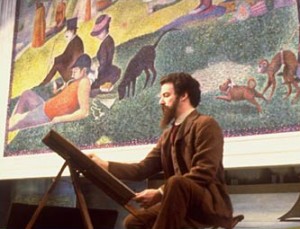 ignores his mistress, “Dot,” who moves away from him, to America, with her newly born child, Marie. George’s obsession with art, and this painting in particular, claims his life. He dies at age 31.
ignores his mistress, “Dot,” who moves away from him, to America, with her newly born child, Marie. George’s obsession with art, and this painting in particular, claims his life. He dies at age 31.
The second half of the show finds the elderly Marie at the Chicago Art Institute, where the painting is being celebrated on its 100th anniversary. Marie’s grandson, George, is an artist who is premiering his 7th Chromalume in celebration of his Great Grandfather’s work. After Marie dies, _____Mandy patinkin, the original Georges
he makes a pilgrimage to Paris to visit
the island of la Grand Jatte. He finds artistic inspiration from the ghost of “Dot,” his Great Grandmother.
In short the show is about Art, with a capital “A”.
In its original incarnation, I got it. I saw the show three times on Broadway back then, and I cried fiercely through the performances of Mandy Patinkin and Bernadette Peters.
The show felt perfect, and I was not only moved emotionally but artistically as well. (Actually the third time found Robert Westenberg in the role of Georges.) The show and its soundtrack was and has remained a great source of inspiration for me.
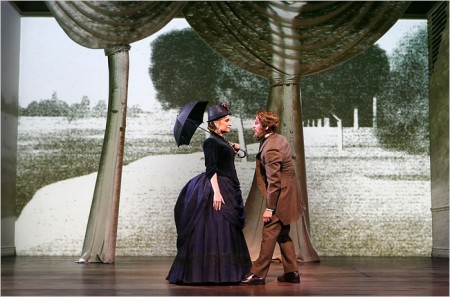
Animation works behind the actors as well as on top of these cut out trees.
The trees throw no shadow, and the animation on them doesn’t overlap
onto the background.
The current production has been imported from England where it was enormously successful. Apparently, judging by the reviews, it will be here as well.
The director is an ex animator who has moved into theatrical direction; this being his first real show. And it’s a big one. His conceit was to use animation for the painting and its creation as well as in other small sections.
This works wonderfully, at times, and horribly at other times. At the very beginning, Georges wallks out to a large, bare room painted white (though the lighting makes it look like a soft gray.) With Georges’ first big gesture a line draws completely across the entire set. Then it animates, on vocal cue, to a blurring of the chalk line. From this the chalk drawing of the painting fills the stage across the forced perspective of the room with its four doors. At this early point in the show, I thought that this might be interesting.
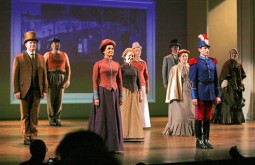 Every so often, on cue to the songs, a character drawn on the background animates. There’s a slight move and then a freeze … then another move … then a freeze. The movement generally is very lifelike, so one assumes it was motion capture and flattened to look like a chalk drawing or painted image. At one point, a soldier looks horribly done. It almost feels like a very early cgi character – plastic and hollow.
Every so often, on cue to the songs, a character drawn on the background animates. There’s a slight move and then a freeze … then another move … then a freeze. The movement generally is very lifelike, so one assumes it was motion capture and flattened to look like a chalk drawing or painted image. At one point, a soldier looks horribly done. It almost feels like a very early cgi character – plastic and hollow.
This became a problem for me. I began to look for the movement on the background and felt completely distracted from the show. A boat moves on the background. A man leans against a tree. A dog takes three steps and freezes. People wipe on or fade in and/or off. My eyes were often diverted. If wanted to watch the show – the actors and the complex story – I was distracted by irrelevant animation.
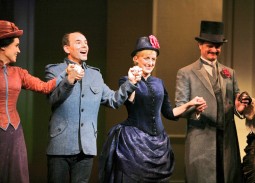 I was mostly impressed with the cast. Jenna Russell as “Dot” and “Marie” was excellent and seemed, at times, to be channeling Bernadette Peters from the original. Daniel Evans didn’t channel Mandy Patinkin, and I had more difficulty with him as “Georges” and found him more appropriate as “George.” I did have a problem with his being bald in the second half. At first I didn’t recognize this as the same actor, and I liked that. However, when he meets up with the ghost of “Dot” in Paris, I wondered how she so easily recognized him without the hair and beard. He no longer looked like her lover, Georges.
I was mostly impressed with the cast. Jenna Russell as “Dot” and “Marie” was excellent and seemed, at times, to be channeling Bernadette Peters from the original. Daniel Evans didn’t channel Mandy Patinkin, and I had more difficulty with him as “Georges” and found him more appropriate as “George.” I did have a problem with his being bald in the second half. At first I didn’t recognize this as the same actor, and I liked that. However, when he meets up with the ghost of “Dot” in Paris, I wondered how she so easily recognized him without the hair and beard. He no longer looked like her lover, Georges.
I was particularly bothered by the critical scene of Georges Seurat in his studio where he’s obsessed with “painting the hat.” He starts with a canvas (yes, it’s supposed to be a painting but the characters on it are animated, moving), but then he moves to a pad on which I guess he’s drawing the hat. All this movement keeps the eye moving and occupied, but it plays against the scene and its emotion. In the original, he stays at that canvas painting the hat and painting the hat and painting the hat. He only moves away from it to argue with “Dot.” This director isn’t clear in what he’s trying to say. I know he’s trying to “paint the hat” because the lyrics tell us that, but we don’t experience the difficulty of getting that “hat” just right. I understood it because I know the show, but I wonder what someone new to the musical would have gotten.
The projections are stunning in that they don’t seem to be on top of the actors, so I wasn’t sure how they were projected. There were no shadows of the actors thrown on the walls. Surely it couldn’t be rear-screen projection since you can see the walls, and when a door opens the projection moves with the door. Presumably it was multiple projection moving over so large a screen of a set. I didn’t notice any keystoning.
The primary animation stays on the back wall and is deceptive in giving you a false sense of perspective. At one point, when it represents the painting exhibited on the museum’s back wall, the painting and the wall move back in perspective as the room extends enormously. The extension, of course, is just an animated image, but it looks real as the actual room despite moving back. You can’t feel where the set and the movie separate, although you’re watching that rectangular screen of a wall.
These technically magnificent projections were designed and executed by by Timothy Bird and the Knifedge Creative Network.
I started off by saying, I’m glad it’ll be successful. It means that the technical achievement, which is a large leap and done extraordinarily well, would be utilized in other shows. However, I find it dispiriting in that it’s all too distracting. Essentially what’s happening is that a movie on the set is overwhelming the theatrical events in front of the screen. I came to the theater, not a movie. The animation should be absolutely and completely subservient to the show and not get in the way. I found it more moving in the original to view a flat, cut-out soldier than to see the gimmicky animation in this version. Yes, the painting and the corridor moves into the distance, but it’s immediately followed by another copy of the painting dropping close up to us. Why did it move away except, of course, for an effect? That’s the problem with this show, the effect is too big. When Georges is painting a painting, why are the characters he’s painting moving – however slightly? It’s a painting and the movement doesn’t mean anything to what’s going on. It’s just annoying.
I wish Sam Buntrock would have limited what he was animating. Less is more in my book. One wonders what a more established directed would have asked for. An interview with this animator-turned-director appeared in the Roundabout’s membership magazine, Front & Center. I haven’t found this on line, so I post jpegs of it below.
The NYPost offers a video clip from the show giving a brief idea of the animation here. It also gives a clip of the song where Georges is drawing the “hat” when he should be painting the hat.
Commentary &T.Hachtman 22 Feb 2008 09:23 am
Sita, Gertrude and George
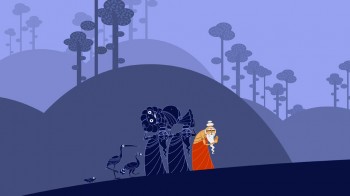 - Nina Paley was invited to premiere her feature length hand drawn feature, Sita Sings the Blues, at the Berlinale, the 58th International Berlin Film Festival.
- Nina Paley was invited to premiere her feature length hand drawn feature, Sita Sings the Blues, at the Berlinale, the 58th International Berlin Film Festival.
What an accomplishment!
And as if that weren’t enough, the film won a special notice citation from the festival.
The festival announcement
reads like this:
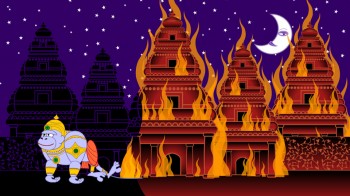 Berlinale 2008:
Berlinale 2008:
The members of the Youth Jury in the Generation 14plus include:
Roman Akbar
Zadora Enste
Hans Hirsch
Nora Kubach
Zoё Martin
Linda Moog
Lavan Vasuthevan
A special mention goes to
Sita sings the Blues by Nina Paley (USA)
Certain stories can be re-told forever, even over thousands of years. This
innovative and unique film has impressed us with its boundless creativity and
irresistible charm.
Congratulations and kudos to Nina for this extraordinary achievement. I’m really pleased and proud for her accomplishment.
- Tom Hachtman came by the studio to show off a new book. New Yorker cartoonist, Sid Harris has edited a the book, 101 Funny Things about Global Warming.
This is a collection of cartoons by different cartoonists who have something to say about the subject. People like Ben Katchor, Lee Lorenz, Gahan Wilson, and Tom Hachtman have some hilarious entries here. Tom did two Gertrude’s Follies strips. Here’s one of them.
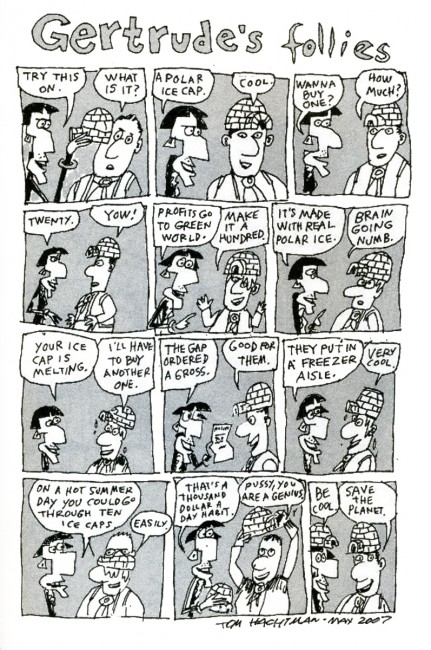
(Click any image to enlarge.)
- On Wednesday, I saw Sunday In The Park with George. Despite having an animator for a director, or maybe because of it, I didn’t like the show. Actually, I love the show – it’s probably my favorite theatrical piece. But I didn’t like this version of the show. It was heartless and wholly unemotional. Since all the reviews were absolutely glowing throwing the term “Art” around a lot, I feel like something of a curmudgeon. Who cares; I know what I saw and didn’t see.
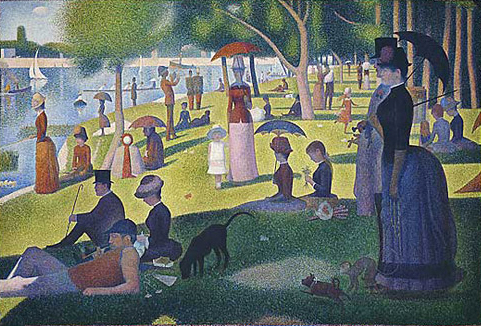
I haven’t had time to sort out my thoughts, but I’ll try to give a full account of it tomorrow and let you know how the animation helped kill it. I also have an interview with the animator-turned-director I’ll post.
The show opened last night, so the reviews are printed in the papers today.
Here’s Ben Brantley‘s glowing review in the NYTimes.
Here’s Joe Dziemianowicz‘ glowing review in The NYDaily News.
Here’s Linda Winer‘s review for Newsday and the Associated Press.
Animation &Animation Artifacts &Disney &Frame Grabs 21 Feb 2008 09:51 am
Dragons
- I watched bits of The Reluctant Dragon dvd yesterday, and was impressed with the title sequence for the “Behind the Scenes” portion of the film. For the animation credits, they’ve caricatured all the artists involved. (I wonder if the live action folk felt left out.)
The drawings are by T.Hee, but one wonders who did the writing of each name. I have to assume that each artist got to sign his* own name.
____*Note: no women got to sign their names
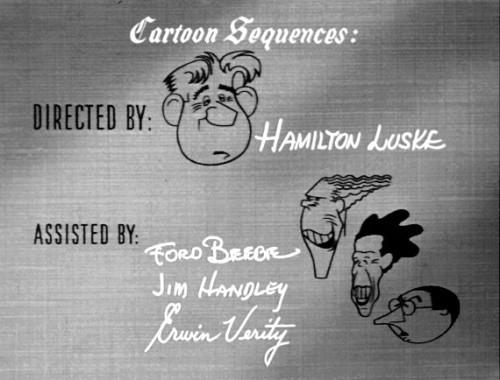
_____(Click any image to enlarge.)
After watching these credits I had to take a short look at some of the animation from The Reluctant Dragon, itself. I decided to take this little skip and study the images. I’ve put it together as if it were a cycle, but it really wasn’t as it appears in the film. Hence, it doesn’t quite work as one.
However, I’m sharing the stills via frame grabs.
Finally, heres a small QT movie of the piece on two’s.
Anyone know the name of the animator of this scene? It’s just after the boy meets the dragon.
Animation Artifacts &Frame Grabs &Story & Storyboards 20 Feb 2008 09:28 am
Peet’s Susie Book 2
- Concluding what I started yesterday, here are the pages of what must be a book that was prepared by Bill Peet. Susie the Little Blue Coupe. I don’t know if it was ever published (there was a Little Golden Book, but this is not it), but, obviously, it became the animated short completed at Disney in 1951.
The plan for this book is excellent, and gives a good indication of the great books Mr. Peet would do after leaving animation. Many thanks to John Canemaker for the loan of this rare material; it makes an unusal post.
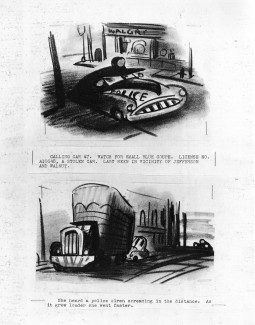 11_
11_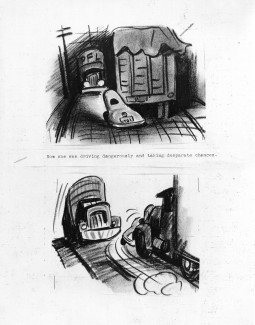 12
12
_____________(Click any image you like to enlarge it to a legible size.)
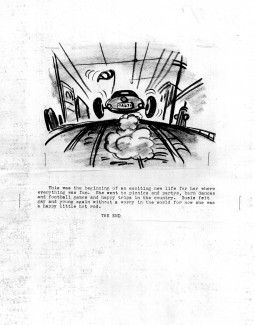 21
21
_
Next week I’ll post Bill Peet’s storyboard for the film.
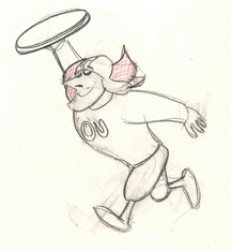
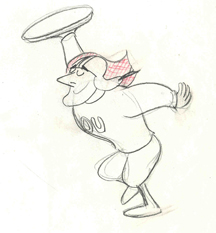
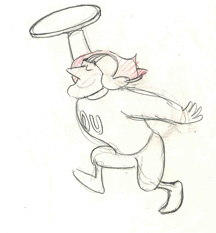
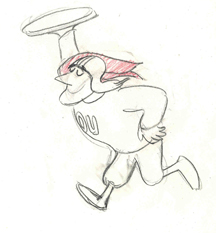
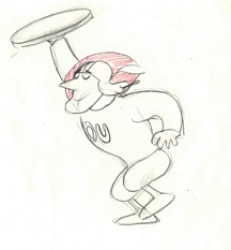
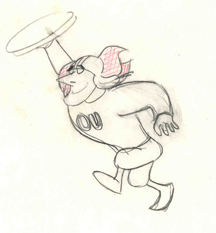
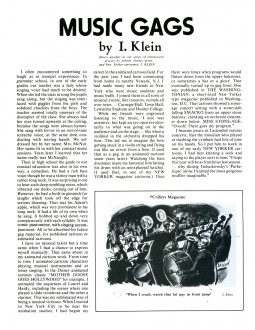 1
1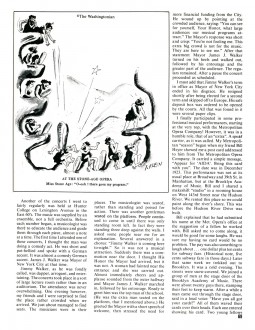 2
2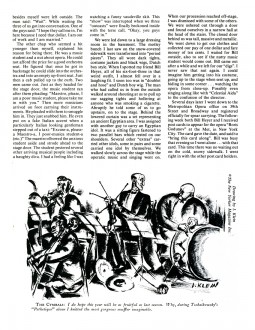 3
3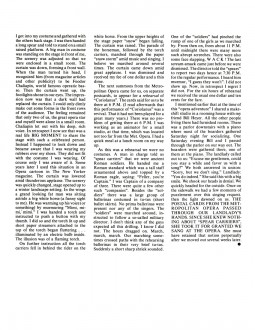 4
4

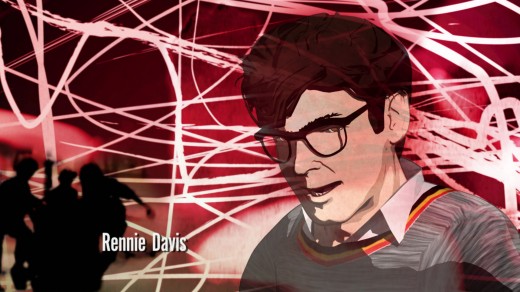
 B1b
B1b B2a
B2a B2b
B2b B3a
B3a B3b
B3b B4a
B4a B4b
B4b B5a
B5a B5b
B5b B6a
B6a B6b
B6b B7a
B7a B7b
B7b B8a
B8a B8b
B8b A1b
A1b A2a
A2a A2b
A2b A3a
A3a A3b
A3b A4a
A4a A4b
A4b A5a
A5a A5b
A5b A6a
A6a A6b
A6b A7a
A7a A7b
A7b A8a
A8a A8b
A8b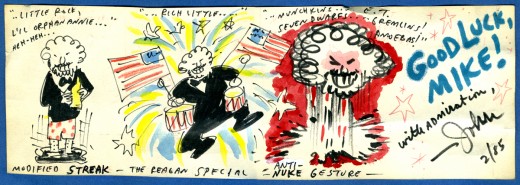
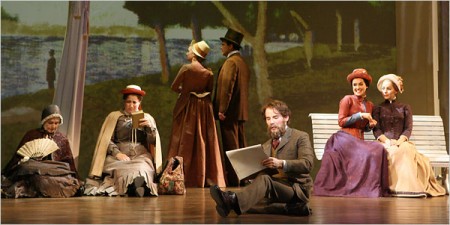
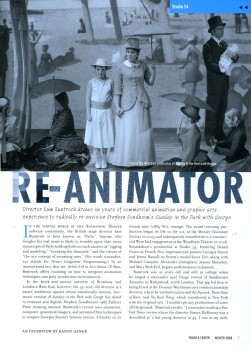 1
1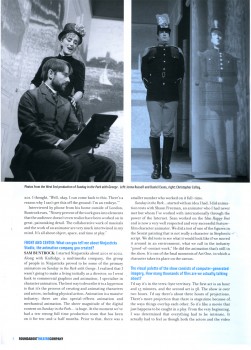 2
2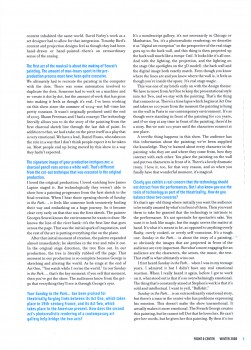 3
3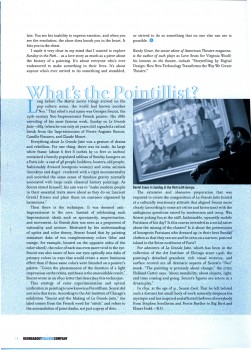 4
4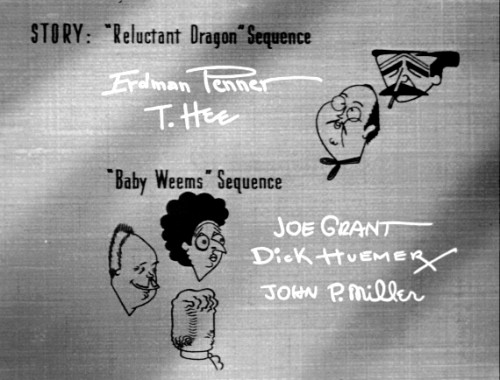
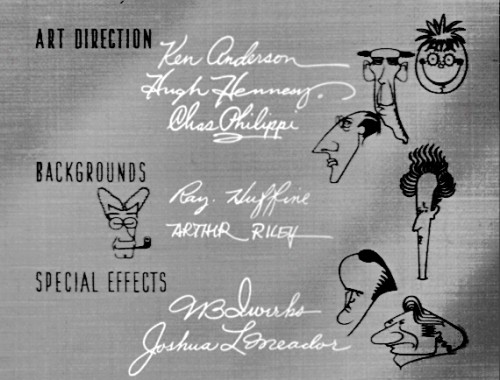
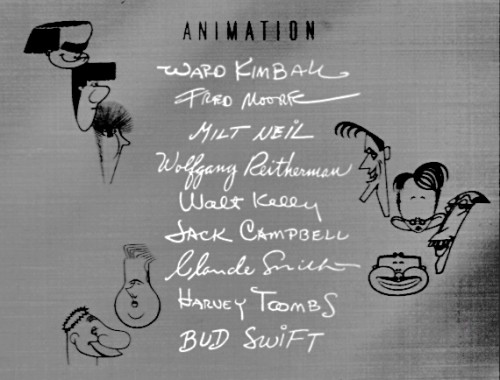
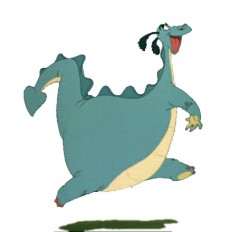 1
1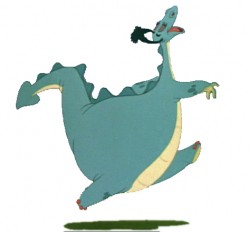 2
2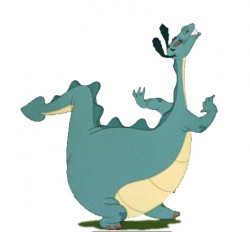 3
3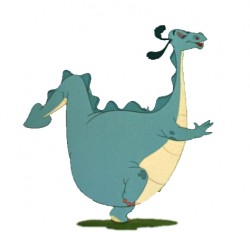 4
4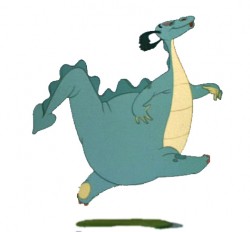 5
5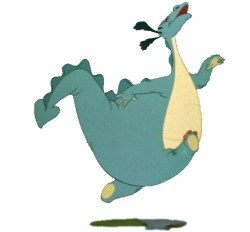 6
6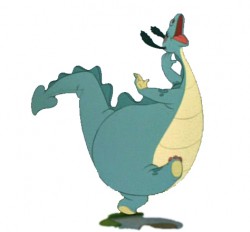 7
7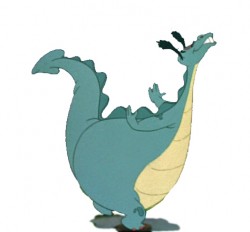 8
8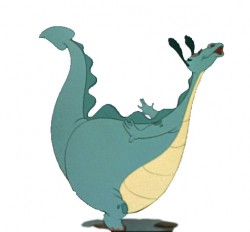 9
9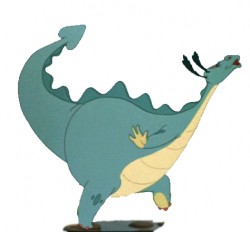 10
10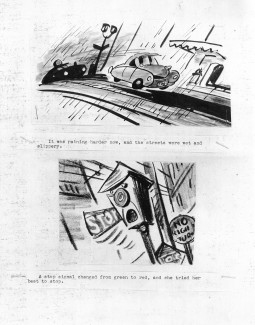 13
13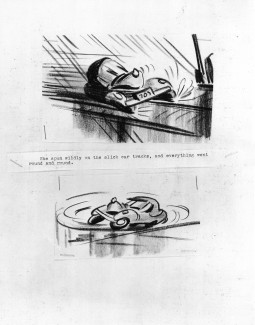 14
14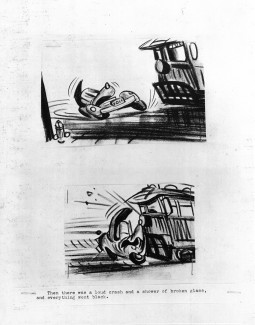 15
15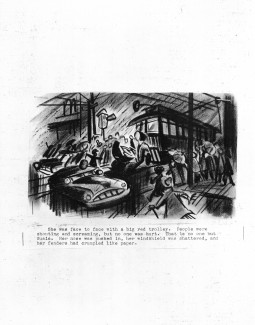 16
16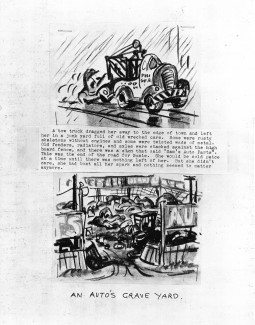 17
17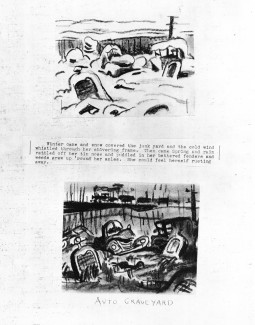 18
18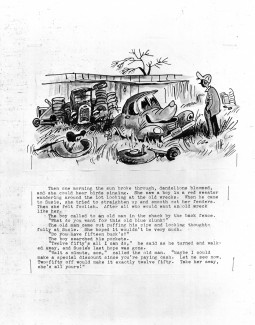 19
19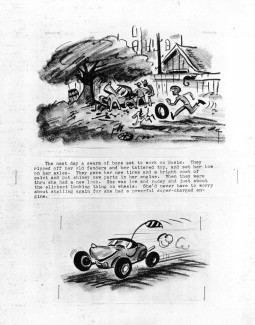 20
20